2022 Jeep Grand Cherokee 4xe First Drive Review | Killer road trip package

MOAB, Utah and AUSTIN, Texas — The Jeep Grand Cherokee rollout has taken the better part of a year to fully realize, but with the launch of the new 2022 Grand Cherokee 4xe plug-in hybrid, it’s all over but the proverbial crying. Well, at least until Jeep starts stuffing Hurricane inline-sixes under the hood. Anybody want to place bets on that timeline?
So, the basics. The Grand Cherokee 4xe’s powertrain is lifted pretty much directly from the Wrangler 4xe. They make the same power (375 horses) and torque (470 pound-feet). “Plug-in hybrid” is a mouthful, so you’d be forgiven for expecting that the powertrain itself is inherently complex, but mechanically, it’s quite simple.
Up at the nose, there’s a 270-hp, 2.0-liter turbocharged inline-four engine (essentially the same one used as a standalone turbo-four in the Wrangler). Sandwiched between that and the eight-speed automatic transmission is a 100-kilowatt (134 hp) electric traction motor. This motor effectively takes the place of the transmission’s torque converter, with clutches on either side to control the flow of power.
Electricity is stored in a pair of batteries (17.3 kilowatt-hour total) saddled on either side of the Grand Cherokee’s transmission and driveshaft tunnel, which is a distinctive bit of packaging. Since this is a Grand Cherokee, the 4xe system is mated to Jeep’s “Quadra Trac II” 4×4 system with its two-speed transfer case. All told, this combo is good for slightly better EPA-certified all-electric range than the Wrangler’s (26 miles vs. 22), a much more robust 6,000 pounds of trailer towing, and a 47.4:1 crawl ratio.
In the hierarchy of Grand Cherokee, the 4xe looks outstanding on paper. It has more power than the 5.7-liter Hemi V8 (and gets to 60 a full second quicker, Jeep says), offers an all-electric mode, gets better mileage than the 3.6-liter Pentastar should you not take advantage of that all-electric mode (23 mpg combined vs. 22) and still does all the Jeep things. There’s even a Trailhawk with all the off-road bells and whistles, and yes, you can off-road it in pure EV mode.

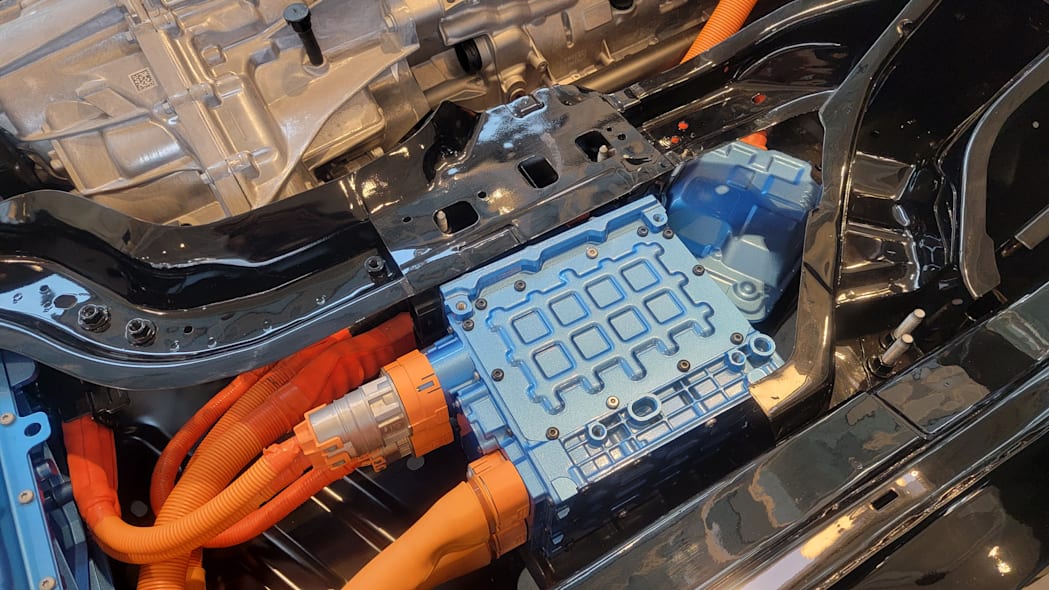
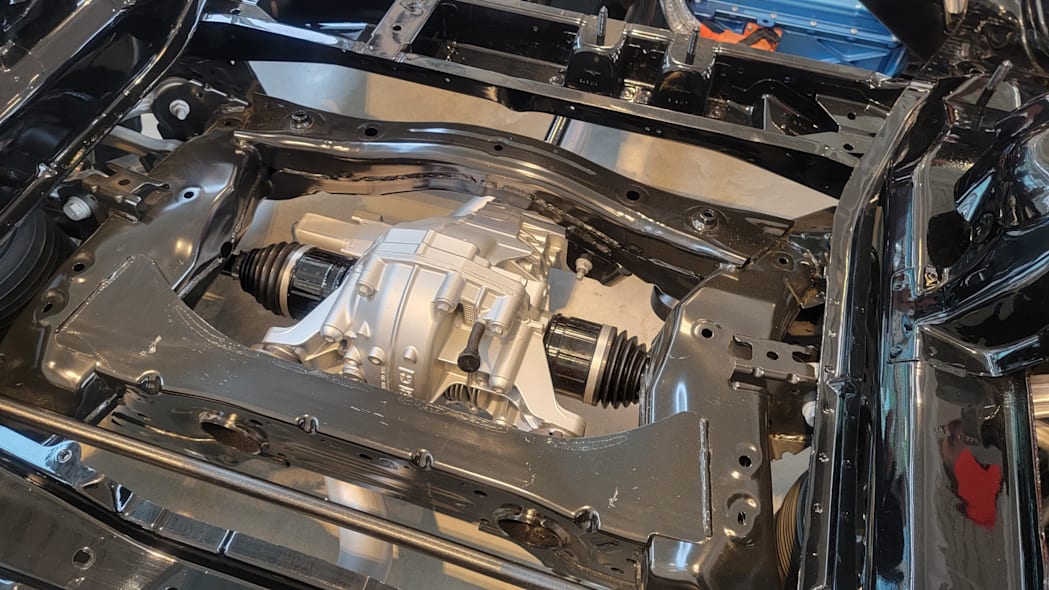
That’s mighty chonky for a midsize two-row SUV, and even though the 4xe is the most fuel-efficient Grand Cherokee, that weight has repercussions apart from the consequences of basic physics. This is an SUV, so those 500 pounds come out of the 4xe’s towing capacity, which amounts to 6,000 pounds. That may be respectable for the segment, but it’s 1,200 pounds (a basic aluminum car hauler, pretty much) less than the Hemi can tow. Weight matters.
But let’s flip that around one more time. Sure, added mass is usually bad (though not always, if you believe Porsche or Bentley), but that mass was added down low, where Jeep’s engineers tried to concentrate the Grand Cherokee’s center of gravity. Even in the gasoline-powered model, the front axle shaft is routed through the Pentastar V6’s oil pan. That strategy allowed the engine to be placed lower in the car without compromising off-road capability; the same principle is at work here.
On the road, the 4xe carries its extra heft well. I’ve driven it twice now — once outside Austin, Texas, and again around Moab, Utah. The former was a rather plain affair involving a lot of rural highway driving interrupted by a brief (albeit entertaining) off-road excursion followed by a run-in with a young, ambitious whitetail deer. Virtually no damage was done, but the incident was illustrative of how much that extra weight matters. Even going no more than 35 mph on a dirt road, that 4xe needed some serious “woah” to come down from a trot. Killer package, indeed.
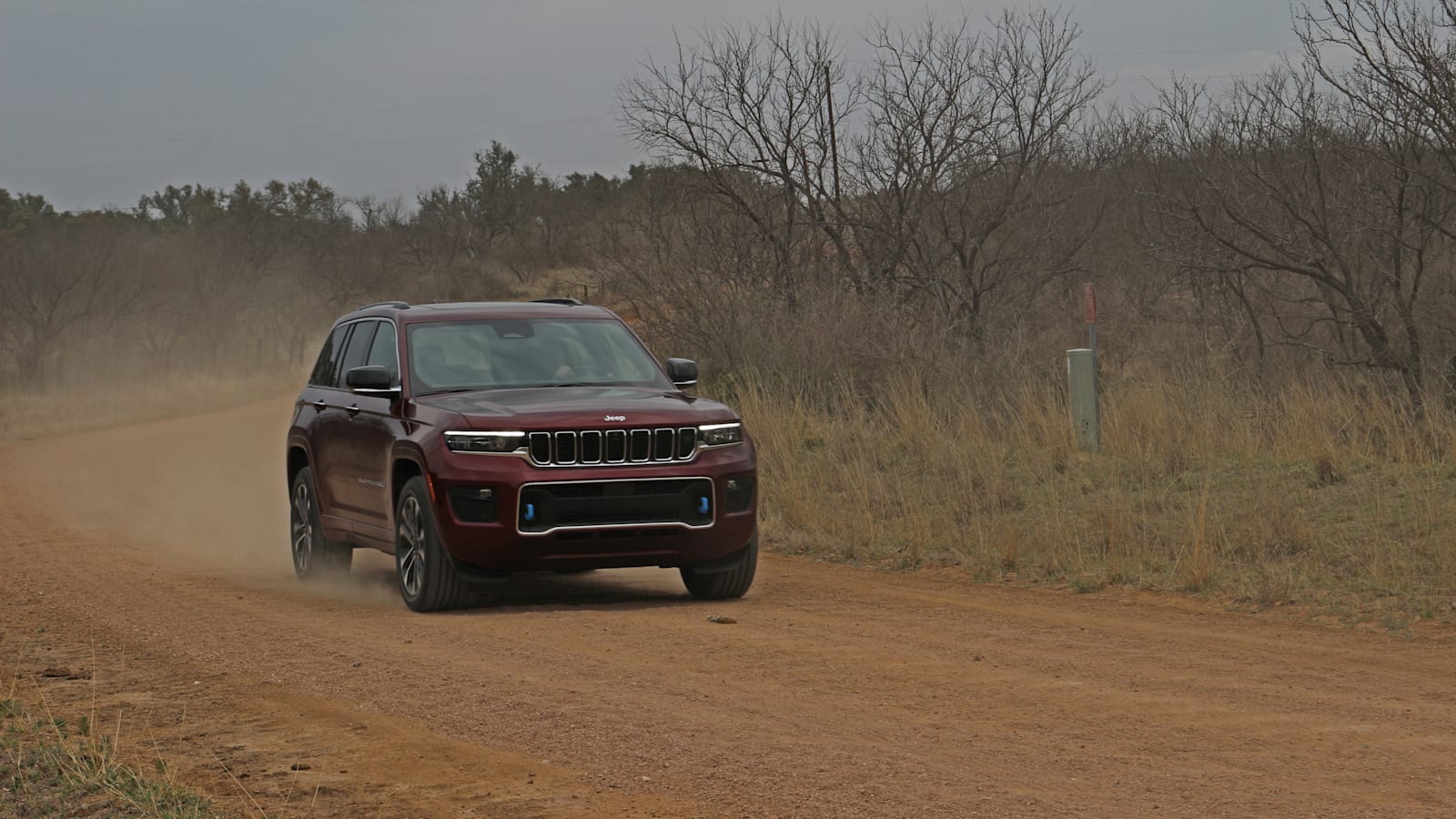
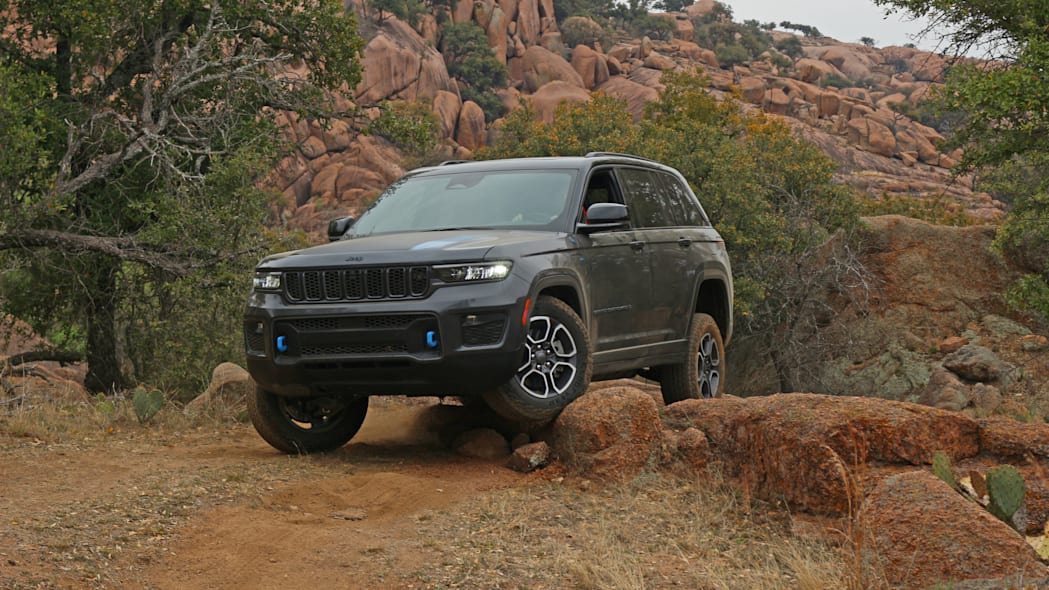
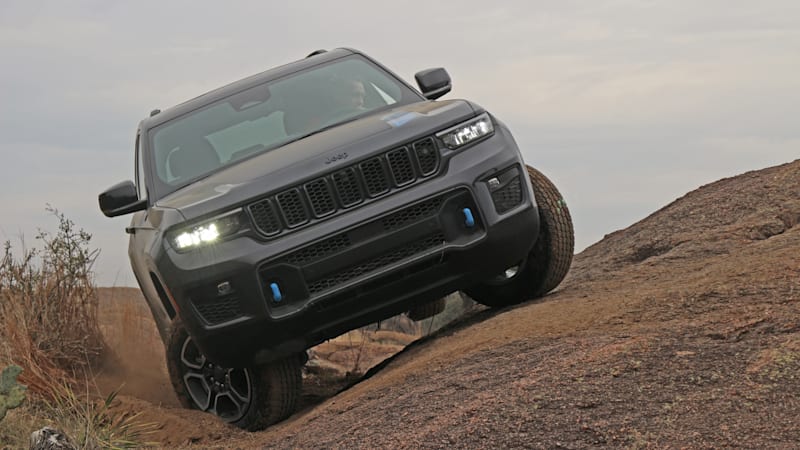
The latter was more informative, as Moab was also the venue for my non-hybrid Grand Cherokee drive late last year, giving me the opportunity to cover the same ground as before, only this time with the hybrid powertrain. In Moab, the 4xe is king. Though it sits in a river valley, Moab’s elevation is above 4,000 feet. The V6 and V8 engines felt far less spry at those heights than they do closer to sea level, but the 4xe’s electric traction motor doesn’t need to ingest air in order to make power and its engine benefits from turbocharging, which can cram more of that less-dense air into the combustion chamber more efficiently than a naturally aspirated induction system.
I made a point to retrace my steps from last year, but with a new twist — I made a point to reset the trip computer before climbing the switchbacks of La Sal Mountain Loop Road. This was the same stretch that prompted me to call the Pentastar V6 adequate but not invigorating. The 4xe is far more eager to attack the uphill sections and easily reined back in when the road pitches the other way. The hybrid powertrain gets some credit here thanks to its Max Regen feature, which pegs the traction motor’s regenerative braking at its max resistance, allowing for a reasonably decent implementation of one-pedal driving.
Jeep’s one-pedal drive calibration maxes at 0.25 g, which is enough to brake even on steeper declines when you simply lift off the throttle, but it’ll take a while to come to a complete stop without help from the friction brakes. The beauty is that this mode does an admirable job of converting excess downhill momentum into stored electric power. As I result, I averaged 29.4 mpg over the course of the 42-mile drive up and down the mountains. Despite clocking 26.4 miles on battery and 16.0 miles on gas, I still had 44% of my battery reserve (or 14 miles, the dash estimated) when I parked the 4xe. I started the climb with far less.
Dynamically, that low center of gravity pays dividends. Understeer is the name of the game if you start pushing too hard, but the 4xe’s nose is surprisingly alert to inputs unless you deliberately over-drive it. Remember, the hybrid system thrives on braking and there’s no e-axle in the rear that needs time to react to your ham-fisted shenanigans. Haul it in, get it pointed somewhere vaguely safe, roll assertively back on the throttle and the 4xe’s rear end will finish the job for you.
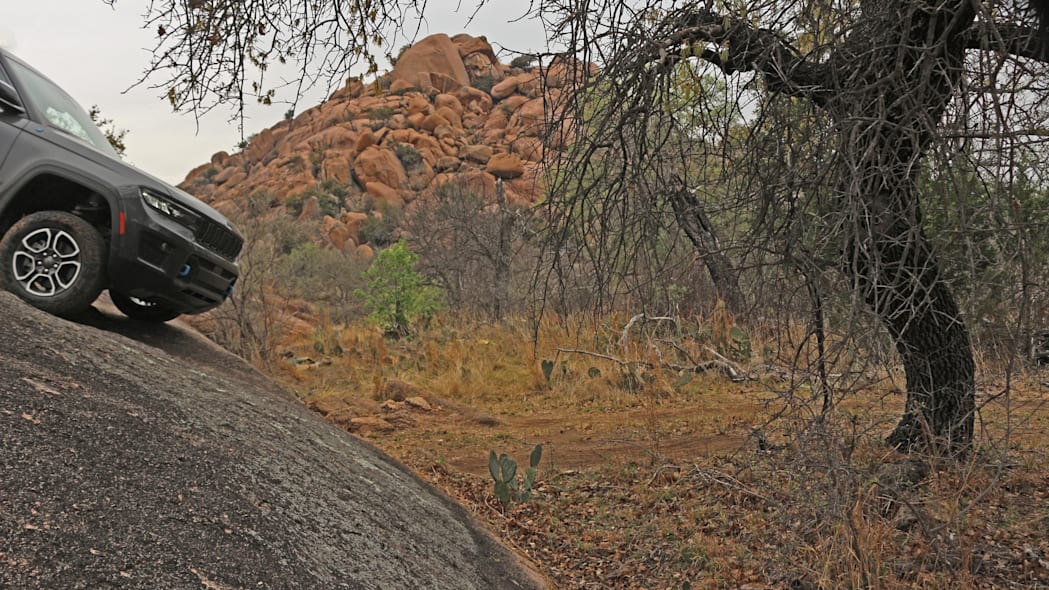


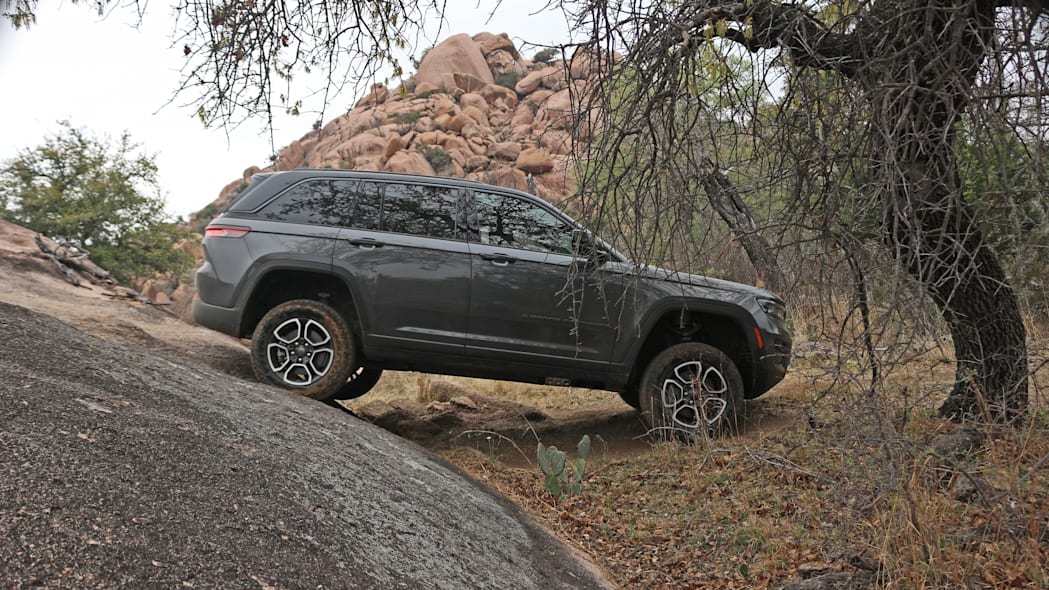
Since the Grand Cherokee’s off-road-focused Trailhawk trim is available in 4xe guise, it should be no surprise that Jeep wanted to show off its capabilities. All of its off-road bits made the transition from the Grand Cherokee Trailhawk V6, so you still get the electronic sway bar disconnect, an electronic limited-slip rear differential, all-terrain tires, more Selec-Terrain drive modes, skid plates, tow hooks and an anti-glare decal on the hood. The 4xe gives up 0.4 of an inch of ground clearance (10.9 inches vs. the non-hybrid’s 11.3 inches), 2.1 degrees of breakover angle and 0.2 degrees of departure angle to the non-hybrids. If you’re in it deep enough for any of these to matter, you probably should have brought a Wrangler.
My 4×4 gas-only experience was behind the wheel of a 3.6-liter Trailhawk, which weighs nearly eight hundred pounds less than the 4xe Trailhawk. Let that sink in — much like the 4xe might in soft sand or mud. Neither was abundant for either of my treks, thankfully, and the instant torque from the 4xe’s electric motor made its heft fade into the background — mostly, anyway.
Slow, technical rock-crawling brings it into sharp relief. Jeep obviously firmed up the 4xe’s air suspension to help control all that extra mass, but when things get jiggly, it’s hard to ignore just how much vehicular corpulence that system has to manage. One false move could bring the 4xe’s underbelly (where the batteries and gas tank live) down hard on an unanticipated or unseen protrusion. While that electric motor torque may mask the 4xe’s heft from a dead stop, modulating it in situations where a large compression event might take place requires a bit more finesse and forethought.
I called the Jeep Wrangler 4xe the best example of the open-top 4×4, and fans of consistency will be pleased to note that the same holds true for the Grand Cherokee. It’s not perfect, nor is it necessarily the right Grand Cherokee for every buyer, especially since its base price plus destination has it knocking on the door of $60,000. A Limited V6 4×4 would be about $10,000 cheaper, albeit with less standard equipment. But for those who are looking to drop big money on a luxurious midsize SUV that will allow them to kick their daily gasoline habit without giving up road trip versatility, the 2022 Jeep Grand Cherokee 4xe is a killer package. But please, keep it figurative.
Related Video







